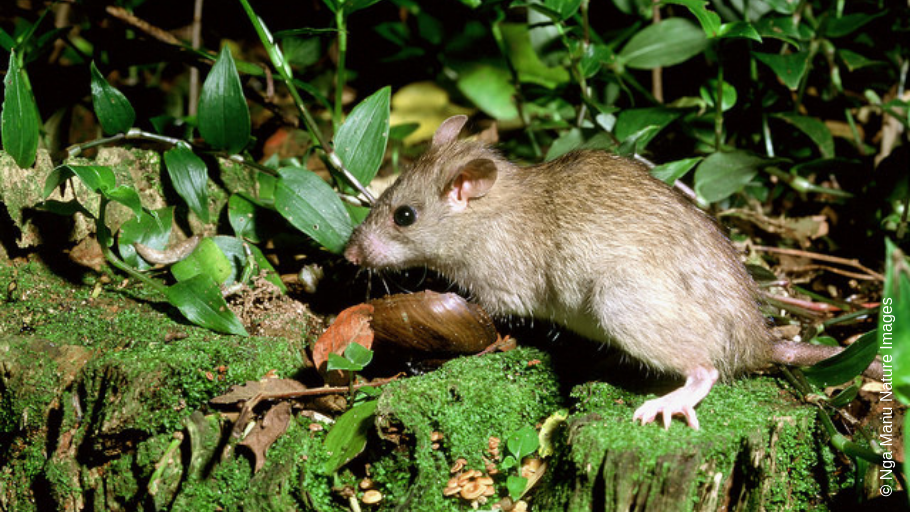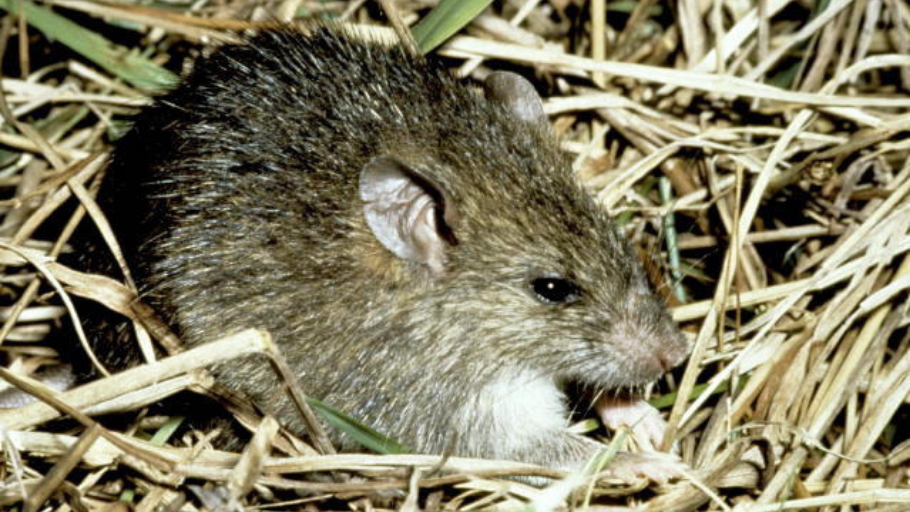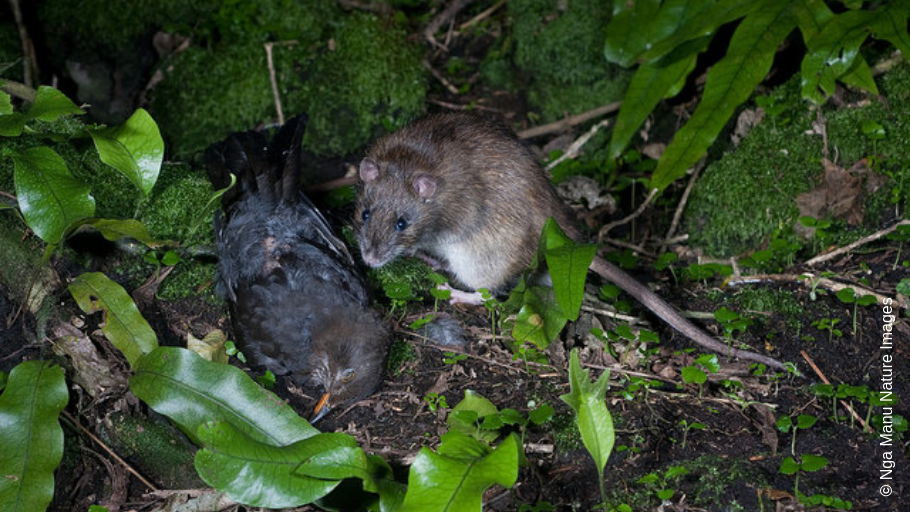ON THIS PAGE
How did they get here?
Aotearoa has no native rats, but three types came with early sailors: the kiore (Rattus exulans), which is the smallest, the Norway rat (Rattus norvegicus, also called the brown rat), which is the biggest, and the ship rat (Rattus rattus — also called the black rat), which is the most common.
Kiore came to New Zealand with early Māori voyagers, while Norway rats and ship rats travelled here on whaling ships and with early European settlers.
What do NZ’s rats look like?
Kiore are small rats with brown fur and a grey and white underside. The tail of a kiore is shorter than the body. An adult kiore is approximately 4cm shorter than an adult ship rat and can look similar in appearance — sometimes the two species are confused.
The Norway rat has a short, thick tail, which is shorter than its body, and small ears. Norway rats are particularly good swimmers and are able to swim up to one kilometre. They are able to climb trees but spend most of their time on the ground.
The ship rat has bigger ears and a tail that’s longer than its body.



Where do rats live?
Kiore are found on several offshore islands, including Rakiura/Stewart Island, and parts of Fiordland. Kiore are good climbers.
Norway rats can be found nationwide. They are good swimmers and are often seen in or near waterways. They tend not to climb very high.
Ship rats are found nationwide and are good climbers.
Both Norway rats and ship rats like to live near humans and can be found in houses, waterways and at tips. Ship rats will climb through cracks in walls and holes in ceilings and make their home in roofs. Norway rats will enter through a structure’s foundations and may dig burrows under floors. They like areas that are messy, smelly, and easy to access.
What do we know about rat behaviour?
Rats are omnivores and have a varied diet. Ship rats climb trees and eat bird chicks and eggs, while Norway rats are good swimmers and also prey on ground-nesting birds.
Norway rats and ship rats are neophobic — they’re afraid of new foods or situations. Just because you have never seen them, doesn’t mean they are not on your property!
What impact do rats have?
All three types of rats are a major threat to NZ’s flora and fauna because they are omnivores and compete with local wildlife for food. Rats eat wētā and other insects, snails, frogs, lizards, tuatara, birds and bats, as well as the flowers, fruits and seeds of plants. Rats also breed rapidly, making their populations difficult to control.
The ship rat is the biggest threat to wildlife because it’s a good climber and can reach nests in trees. It is thought predation by ship rats has been instrumental in the extinction of many of New Zealand’s native birds, including the bush wren, huia, laughing owl, New Zealand little bittern and South Island snipe.
While Norway rats are found nationwide, they are most common near bodies of water. They will dive into waterways to avoid predation and they are known to prey on crabs and mussels. Norway rats also prey on ground-nesting birds, their eggs and their chicks, such as New Zealand dotterels and shore plover. Because Norway rats are large, they can even attack adult nesting albatross. Meanwhile, kiore have a detrimental impact on small birds, flightless invertebrates such as wētā. However, they also have a cultural and spiritual significance for some iwi due to their association with ancestral voyages.
How you can remove rats
To be effective in managing rats on your property, you need to begin with prevention such as removing their food source and nesting grounds. Other things to consider include:
- Clean up inside your home — rats (and mice) like old newspapers or magazines, boxes, rags and junk in cupboards, spare rooms and basements. Did you know that mice can live behind the refrigerator, in the hot water cupboard or in any kitchen cupboard?
- Make sure the outside of your property is tidy — rats (and mice) like piles of bricks, timber, rubble, derelict cars or appliances, piles of garden rubbish and overgrown parts of the section.
- Don’t forget to rodent proof your compost bin too.
- Don’t leave bird or pet food out overnight where rats can access it.
- Try to seal all entrances into buildings and keep areas around houses and buildings clear.
- Trim any trees that are up against your house — it’s more likely to become infested when it is easily accessible to rats!
Rats can also be controlled by trapping and baiting. First, it’s worth purchasing some chew cards and/or tracking tunnels to find out if and where you have rats on your property. Once you know you have rats, then:
- Buy an animal welfare approved trap such as the Victor Professional Rat Trap or T-Rex Trap (inside a tunnel).
- Set up 2–3 traps per backyard and place inside rat tunnels to keep kids and pets safe. Place them on a flat surface near walls, compost or undercover. If you’re not getting results, try a different spot. Try to check the traps daily until you’re getting results and the catch rate goes down, then check every 2–3 weeks.
- If you are out in the bush, set them on lines 100m apart with a trap every 50m (100×50m), or closer in areas with a large number of rats. Check them every 2–3 weeks until the catch rate goes down.
- Serve up some peanut butter and refresh often.
- Make sure you always wear gloves when handling your trap or catches.
If you want to know if your control method for rats is working, make sure you monitor your results. If you’re not catching anything, you may need to try something different (for example, moving your traps to a different location, trying a different bait such as chocolate, or double-checking that the trap is set correctly).
Tip: Don’t forget to tell your neighbours what you are doing in case they want to get involved too, because rats don’t care about fence-line boundaries! For more tips on rat removal, visit our Backyards and Neighbourhoods section.

